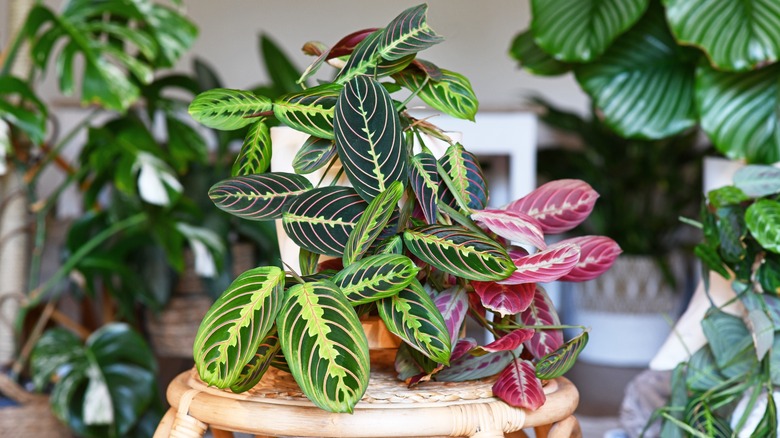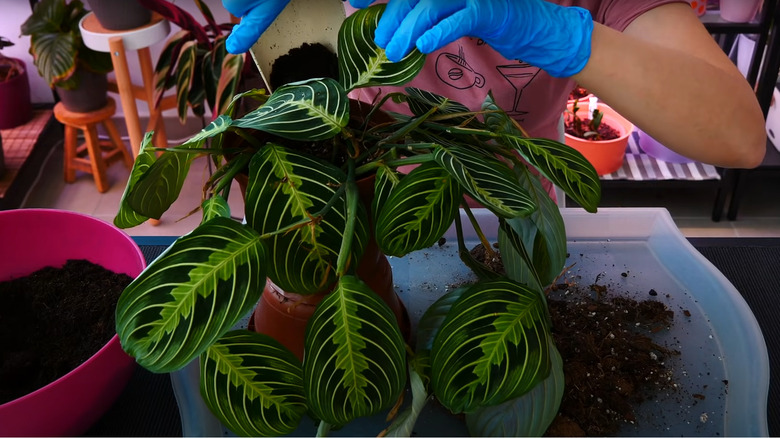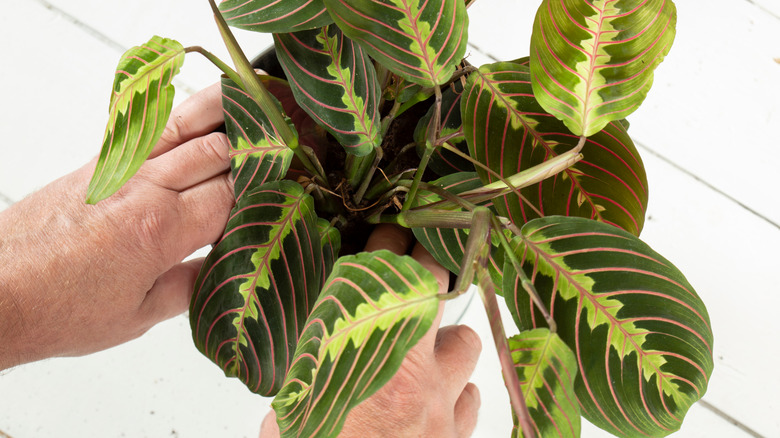Propagating Your Prayer Plant Is A Breeze With These Helpful Tips
Prayer plants, particularly the Maranta leuconeura, have ascended to the status of garden favorites due to their captivating characteristics. Commonly known as the red-veined prayer plant or herringbone plant, Maranta leuconeura boasts broad, ovate leaves with striking patterns of contrasting colors. Its deep green base is adorned with intricate red veins that converge to create a mesmerizing herringbone pattern, enhancing the overall allure of the foliage. The intricate patterns and vibrant colors of Maranta leuconeura leaves make it a desirable houseplant, elevating any setting with a touch of natural elegance.
Native to the tropical rainforests of Brazil, Maranta leuconeura thrives in warm, humid conditions, making it an ideal candidate for indoor cultivation. The leaves of the prayer plant exhibit a unique behavior, folding upward in the evening, resembling hands clasped in prayer, hence its common name. This distinctive trait not only adds to the prayer plant's aesthetic appeal but also makes it an engaging and dynamic addition to any garden or living space.
If you're looking to propagate your prayer plant, root (actually rhizomatous) division stands out as a highly popular method, offering reliability and simplicity. By incorporating helpful tips regarding preparation, handling, watering, and other aspects of this propagation method you can increase the likelihood of a successful root division.
Tips for successful root division propagation
Rhizome or root division is the preferred propagation method for Maranta leuconeura due to its high success rate when done correctly. The new divisions already have an established root system, providing them with a head start in adapting to their new environment. To successfully propagate through root division, begin by selecting a mature and healthy prayer plant, ideally in its active growing season, preferably during spring and early summer. Water the plant a day or two before the division to ensure it's adequately hydrated. This helps minimize stress on the plant during the division process. Gently remove the plant from its pot, supporting the root ball and being careful not to damage the delicate roots. Identify natural divisions or segments within the root system, checking that each section has both healthy roots and shoots. This ensures that the divided sections have the best chance of thriving independently.
Use a clean, sharp knife or pruning shears (sanitized with alcohol and dried) to make clean cuts, minimizing damage to the roots and stress on the plant. Transplant each section into a well-draining, nutrient-rich soil-based potting mix, ensuring the roots are adequately covered. Water the divisions thoroughly and place them in a warm, humid environment with bright, indirect light to encourage rapid root establishment. Maintain a consistent watering routine to keep the soil consistently moist but not waterlogged. Keep a close eye on the divided sections for signs of stress, such as wilting or yellowing leaves.
Prayer plant care and maintenance
Effective care and maintenance are crucial for Maranta leuconeura to thrive. Begin by selecting a well-draining soil mix rich in organic matter, maintaining a pH level between 5.5 and 6.0. Water your prayer plants (preferably with rain or distilled water) when the top inch of the soil is dry to the touch. As much as possible, use room-temperature water to prevent shock to the plant.
Provide bright, indirect light to mimic the dappled sunlight found in its native habitat. Avoid direct sunlight, which can scorch the leaves and cause their bright colors to fade. Maintain a warm environment with temperatures between 70 and 80 degrees Fahrenheit (21 to 26 degrees Celsius) and high humidity levels. Fertilize every two weeks during the growing season with a balanced liquid fertilizer, diluting it to half strength to prevent fertilizer burn.
Regularly inspect the plant for pests, especially spider mites and aphids. If detected, treat the plant with insecticidal soap or neem oil, ensuring thorough coverage of both sides of the leaves. Prune damaged or yellowing leaves promptly to encourage new growth and maintain the plant's overall health. With meticulous care following these detailed instructions, your Maranta leuconeura will thrive, showcasing its vibrant and intricate foliage.


